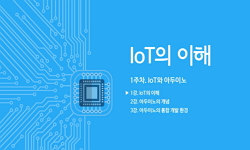The technology of simultaneous wireless information and power transfer (SWIPT)enables the transmission and reception of both information and power simultaneously. It typically adopts a separate receiver (SR) architecture that employs separatemodules f...
http://chineseinput.net/에서 pinyin(병음)방식으로 중국어를 변환할 수 있습니다.
변환된 중국어를 복사하여 사용하시면 됩니다.
- 中文 을 입력하시려면 zhongwen을 입력하시고 space를누르시면됩니다.
- 北京 을 입력하시려면 beijing을 입력하시고 space를 누르시면 됩니다.
부가정보
다국어 초록 (Multilingual Abstract)
It typically adopts a separate receiver (SR) architecture that employs separatemodules for information decoding (ID) and energy harvesting (EH) by means oftime- or power-splitting techniques. However, the SR architecture faces limitationsfor adoption by ultra-low-power Internet-of-Things (IoT) sensors due to its highenergy consumption during the ID process. To address these limitations, research isunderway on an integrated receiver (IR) architecture for SWIPT and, accordingly,novel modulation schemes. However, there is a lack of research on schedulingbetween a couple of modulation schemes designed and tailored for IR architecturesin SWIPT-based IoT sensor networks. Therefore, in this paper, we aim to addressa scheduling problem that achieves a high average system data throughput in sucha SWIPT-based IoT sensor network while guaranteeing a given minimum averageharvested energy amount and data throughput for each IoT sensor. Leveragingstochastic programming theory, we propose an algorithm that jointly schedules IoTsensors and modulation schemes. Lastly, we demonstrate the superiority of ourapproach through simulation results.
The technology of simultaneous wireless information and power transfer (SWIPT)enables the transmission and reception of both information and power simultaneously.
It typically adopts a separate receiver (SR) architecture that employs separatemodules for information decoding (ID) and energy harvesting (EH) by means oftime- or power-splitting techniques. However, the SR architecture faces limitationsfor adoption by ultra-low-power Internet-of-Things (IoT) sensors due to its highenergy consumption during the ID process. To address these limitations, research isunderway on an integrated receiver (IR) architecture for SWIPT and, accordingly,novel modulation schemes. However, there is a lack of research on schedulingbetween a couple of modulation schemes designed and tailored for IR architecturesin SWIPT-based IoT sensor networks. Therefore, in this paper, we aim to addressa scheduling problem that achieves a high average system data throughput in sucha SWIPT-based IoT sensor network while guaranteeing a given minimum averageharvested energy amount and data throughput for each IoT sensor. Leveragingstochastic programming theory, we propose an algorithm that jointly schedules IoTsensors and modulation schemes. Lastly, we demonstrate the superiority of ourapproach through simulation results.
국문 초록 (Abstract)
동시 무선 정보 및 전력 전송 (SWIPT) 기술은 정보와 에너지를 동시에 송수신하는 기술로,시간 분할 및 전력 분할 기법을 통해 독립적인 정보 수신 모듈과 에너지 수확 모듈이 사용되는 분리형...
동시 무선 정보 및 전력 전송 (SWIPT) 기술은 정보와 에너지를 동시에 송수신하는 기술로,시간 분할 및 전력 분할 기법을 통해 독립적인 정보 수신 모듈과 에너지 수확 모듈이 사용되는 분리형 수신기 아키텍처가 일반적으로 사용된다. 하지만 분리형 수신기 아키텍처는 정보 복호화 과정에서 높은 에너지 소모를 초래하여 초저전력 사물인터넷 (IoT) 센서의 사용에 제약이 있다. 이러한 문제를 해결하기 위해 SWIPT용 통합수신기 아키텍처와 이에 맞는새로운 변조 방식은 활발히 연구되고 있지만, 초저전력 IoT 센서 네트워크에서 SWIPT 변조 방식의 스케줄링에 관한 연구는 부족한 실정이다. 따라서 본 논문에서는 SWIPT 기반IoT 센서 네트워크에서 각 IoT 센서의 평균 에너지 수확량과 데이터 처리량의 하한을 보장하며, 높은 평균 시스템 데이터 처리량을 갖는 IoT 센서 및 변조 방식의 공동 스케줄링 기법을 개발하는 것을 목적으로 한다. 확률적 계획법 이론을 이용하여 기법을 개발하고, 시뮬레이션 결과를 통해 제안된 기법의 우수성을 검증한다.
동일학술지(권/호) 다른 논문
-
BeSCL: 그래프 노드 분류를 위한 개선된준지도 및 대조학습
- 한국지능시스템학회
- 김호승
- 2023
- KCI등재
-
지식 그래프와 설명가능 인공지능 기반 사이버 범죄 수사를 위한 지능형 의사결정 지원 시스템
- 한국지능시스템학회
- 정희영
- 2023
- KCI등재
-
부분방전 및 폐플라스틱 신호 데이터를 위한 앙상블 CNN 분류기 설계
- 한국지능시스템학회
- 정병국
- 2023
- KCI등재
-
- 한국지능시스템학회
- 한만수
- 2023
- KCI등재





 DBpia
DBpia






